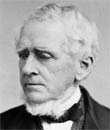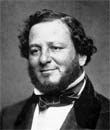
Day-by-Day Timeline of Events
January 29, 1861

February 4, 1861

January 9, 1862
David G. Farragut, a Union Flag Officer, is given command of the Western Gulf Blockading Squadron.
February 20, 1862
Union Captain David Farragut arrives outside of New Orleans, Louisiana with his naval forces in tow. He takes up position at Ship Island near Biloxi, Mississippi. This is part of the campaign to retake the strategically important port city.
March 23, 1862
Union General Benjamin Butler arrives at Ship Island, Mississippi to join in the plans for the ultimate battle to take New Orleans.
April 24, 1862
The Confederate fleet near New Orleans, Louisiana is destroyed by a Union force under the command of Flag Officer David Farragut.
April 24, 1862
CSS Stonewall Jackson, launched in January of 1862, is driven ashore and burned and pressured by Union Navy elements.
April 25, 1862
With no more fight left, Confederate forces surrender the important port city of New Orleans to Union elements.
April 28, 1862
Confederate elements at Fort St. Philip and Fort Jackson (New Orleans) surrender to Union forces.
May 15, 1862
Per General Butler's order, any woman insulting Union troops in New Orleans is to be treated as a prostitute.
July 7, 1862
Under the direction of Union General Benjamin Butler, William Mumford is hanged in New Orleans for his April removal of an American flag.
August 5, 1862
Confederate General Henry Allen is wounded in the Battle of Baton Rouge, leading to his left leg being amputated. He will later be named governor of Confederate Louisiana.
August 5, 1862
The Battle of Baton Rouge takes place on this date. Forces include 2,500 Union against 2,600 Confederate. The battle goes down as a Union victory with similar losses to both sides (371 and 478 respectively).
August 5, 1862
Confederate Captain Alexander Todd is killed in fighting near Baton Rouge, Louisiana. Todd is the brother-in-law of sitting President Abraham Lincoln. He is also the victim of friendly-fire.
August 5, 1862
After developing mechanical issues, CSS Arkansas is abandoned on the Mississippi River and blown up by Confederate forces near Baton Rouge, Louisiana.
November 3, 1862
CSS Cotton and shoreline guns at Berwick Bay, Louisiana, drive away Union naval forces.
November 3, 1862
Union ground forces, aided by five gunboats, attack Confederate positions at Bayou Teche in Louisiana.
November 23, 1862
New Orleans is home to a large show of force as tens of thousands of infantry are paraded through the streets.
January 14, 1863
Bayou Teche, Louisiana is site to another Union-versus-Confederate engagement. This action involves both land forces and gunboat support for the Union.
February 14, 1863
After running aground in the Black River (Louisiana), USS Queen of the West is taken by Confederate forces.
March 14, 1863
Despite heavy damage, a Union fleet under the direction of Admiral Farragut gets by the confederate guns of Port Hudson in Louisiana.
May 2, 1863
General Benjamin Grierson's cavalry raids against Confederate positions ends at Baton, Rouge, Louisiana.
June 7, 1863
The Battle of Milliken's Bend occurs. Confederate General Richard Taylor attacks a Union base at Madison Parrish, Louisiana. The attackers are driven off by a force led by commander Hermann Lieb. The result is a Union victory though casualties number 652 for the North.
September 4, 1863
Union General Ulysses S. Grant is injured after being thrown by his horse. The incident takes place in New Orleans, Louisiana.
March 12, 1864
Union gunboats and ironclads make their way towards Shreveport, Louisiana along the Red River.
March 14, 1864
150,000 bales of cotton are ordered burned prior to the arrival of Union forces in Louisiana. The order is from Confederate General Edmund Smith.
March 21, 1864
Henderson's Hill, Louisiana is the site of a capture of 250 unsuspecting Confederate soldiers by Union forces.
April 7, 1864
Wilson's Plantation in Louisiana is the site of a meeting of cavalry forces from both sides.
April 8, 1864
Confederate forces at Sabine Crossroads along the Red River stop , and drive back, a Union advance.
April 9, 1864
Pleasant Hill, Louisiana is the site of a Union victory over Confederate elements as the Red River Campaign advances. Union General Nathaniel Banks directs the victors.
May 8, 1865
On this date, Confederate forces lay claim to five Union ships. The action occurs near Alexandria, Louisiana.
May 18, 1864
The Battle of Yellow Bayou is had in Avoyelles Parish, Louisiana. It results in a Union victory though not without both sides gaining, and eventually losing, the advantage several times during the battle. The Union is directed by Joseph Mower and the Confederates by Richard Taylor. Losses are 360 and 500 respectively.
May 26, 1864
Following their retreat from Alexandria, Louisiana, Union forces and General Nathaniel Banks reside in Donaldsonville.

